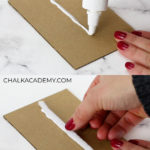How to Make Montessori Tactile Numbers in English and Chinese (Video)
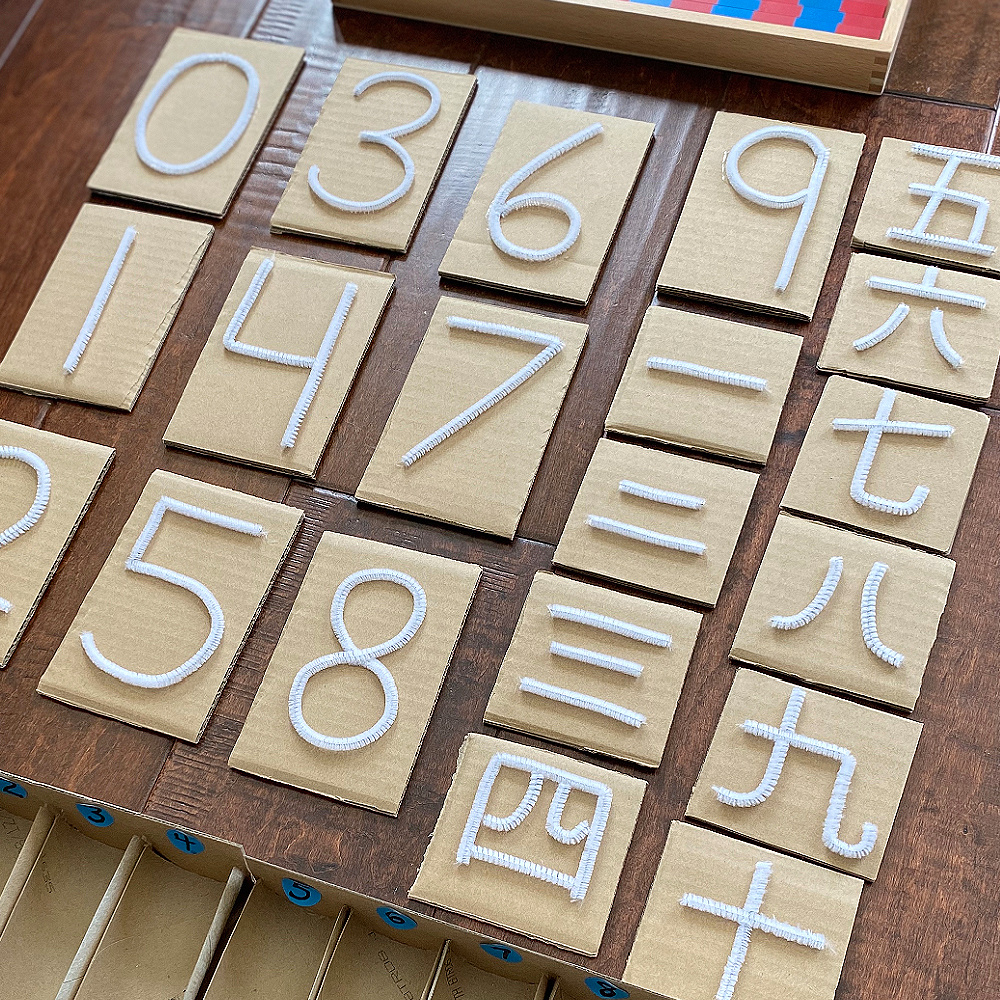
While our Montessori sandpaper number boards were getting ignored and collecting dust, I noticed my kids often creating various shapes, letters, and numbers with pipe cleaners. Also known as chenille stems, these fuzzy and flexible wires are popular for crafting. Because my daughter kept helping her preschooler brother create numbers 0 through 9 with pipe cleaners, we made a set for our bilingual homeschool room!
For our family, the inexpensive pipe cleaner numbers end up getting more love compared to the traditional Montessori sandpaper numbers! I’ll share how to make them and teach these fundamental number symbols. In addition to this post, be sure to read my tips on how to teach basic math for free anytime and everywhere.
Chalk Academy is reader-supported. Some of the links are affiliate links. When you buy something through an affiliate link, we may earn a very small commission at no cost to you. Details here.
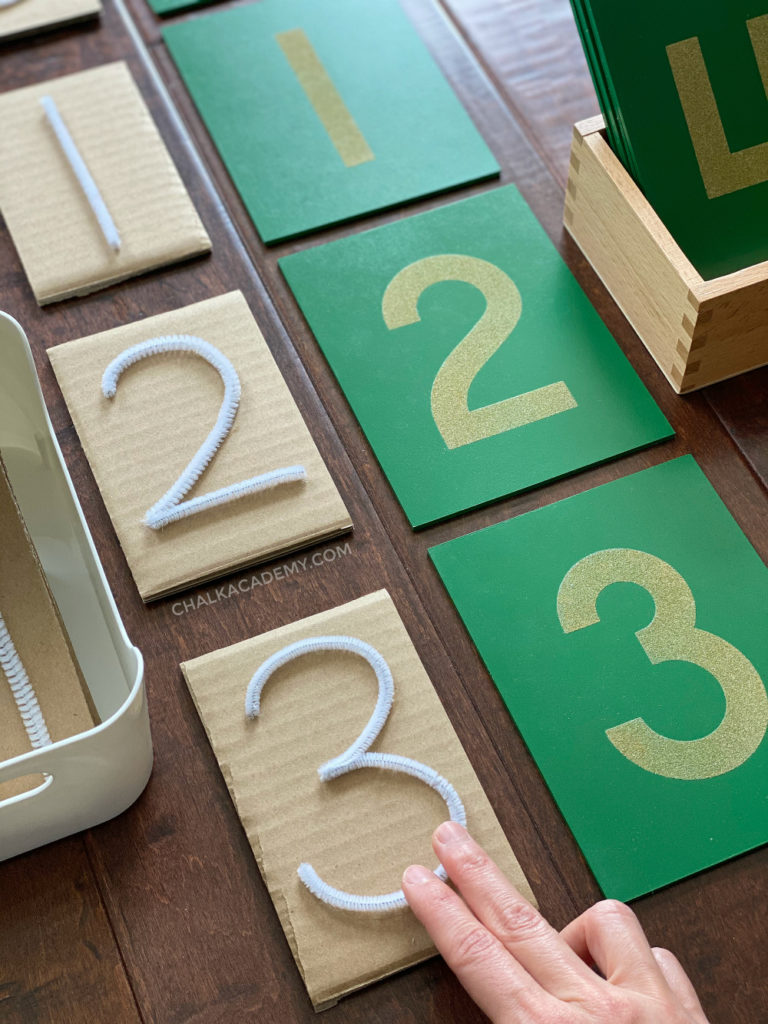
What are the benefits of tactile number cards?
The purpose of textured number is to add sensory stimuli while teaching young children number symbols. Because number symbols are abstract, they are ideally introduced after a child develops a strong understanding about quantity.
When a child sees a typical, black-and-white number on paper, they are using only their eyes to learn that symbol. While some children can quickly remember and interpret this 2-dimensional information, others benefit from additional sensory cues.
Texture allows children to use their fingers to help remember the shape of each number symbol. When using a finger to trace a number with an interesting surface, the child also develops a foundation for future writing.
By following the Montessori philosophy, the same color should be used for all numbers and backgrounds so that children know to focus on distinguishing number shapes.

Comparing Montessori sandpaper versus DIY pipe cleaner number cards
If you’re like me, you might be debating about buying Montessori sandpaper boards versus making these pipe clean number cards. Here are the pros and cons that I consider for various resources:
Montessori sandpaper number boards
- Where to buy:
- 123 sandpaper numbers: Amazon
- Chinese sandpaper numbers: Kid Advance, Amazon
- Benefits:
- Durable quality for multiple siblings and children
- Saves time for parents and teachers who are too busy to craft
- Can potentially resell
- Downsides: Price
DIY pipe cleaner cardboard number cards
- Benefits:
- Low cost
- Partially recycled materials
- Customize size and texture
- Can involve kids and older siblings for more hands-on learning
- Downsides:
- Takes time to prepare
- Less durable
You should also consider what types of materials your children prefer to touch. Some children may be intrigued by rough sandpaper while others prefer the soft texture of pipe cleaners.

How to make tactile pipe cleaner numbers
What you need
- Pipe cleaners (chenille stems) (white recommended to contrast cardboard)
- Cardboard
- Pencil
- Ruler
- Scissors
- Paper trimmer (similar here)
- Craft tacky glue
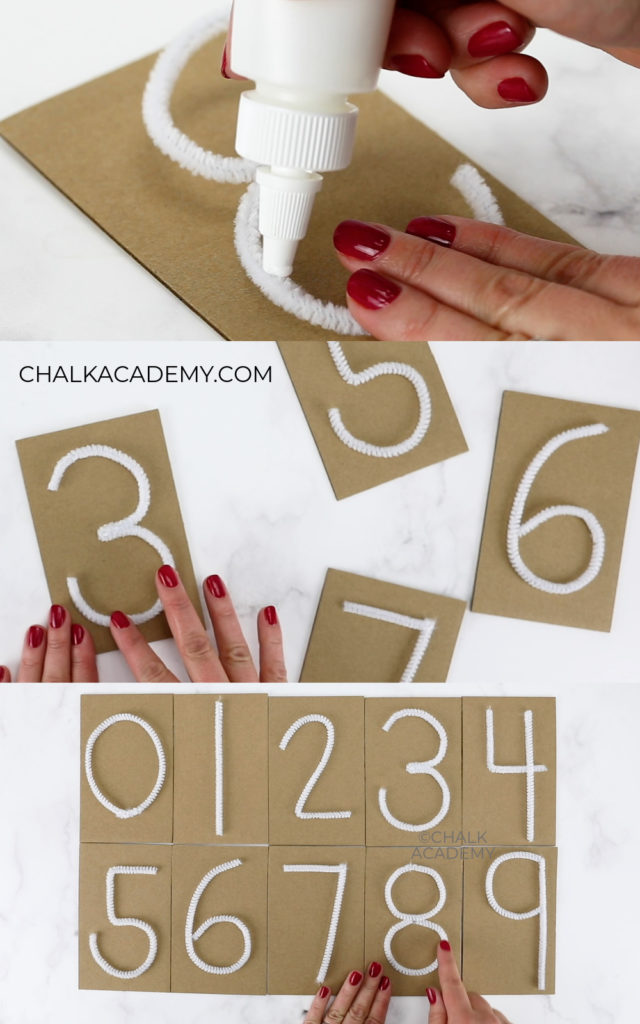
How to prepare tactile number cards
- Use a pencil and ruler to measure measure cardboard pieces. Our Arabic number cards are 3.5in x 5 in, while our Chinese number cards are 3.5in x 3.5in.
- Use paper trimmer to cut 10 cardboard pieces
- Form number shapes with pipe cleaners and cut away excess
- Apply glue to back of number
- Paste number to cardboard
We had so much fun making these together that we made another set for our friend’s family!
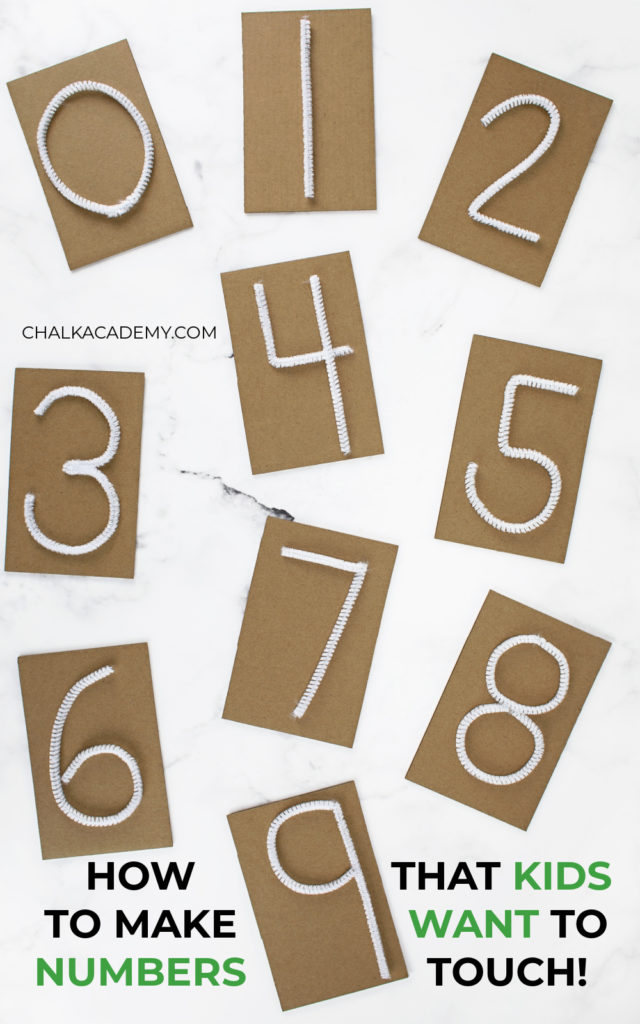
Video tutorial
How to present number symbols through the Montessori method
Montessori period 1 (introduction)
- Put the tactile numbers at the top right corner of a mat or desk.
- Remove the first 3 numbers and place them face-down on the right side.
- Flip over 1 and say “This is one. 这是一。/ 這是一。(Zhè shì yī.)”
- Trace number 1 with your finger following the correct order and let your child try tracing and feeling the texture.
- Move number 1 to the left and face down.
- Flip over 2 and say “This is two. 这是二。/ 這是二。(Zhè shì èr).
- Trace number 2 with your finger following the correct order and let your child try tracing and feeling the texture.
- Move number 2 to the left and face down.
- Flip over 3 and say “This is two. 这是三。/ 這是三。(Zhè shì sān).
- Repeat above steps for numbers 4, 5, and 6. Then repeat for numbers 7, 8, and 9. Depending on the child, this may take a few days or weeks.
Montessori period 2 (recognition)
- Take out three of the numbers and ask your child to point to a certain number without any pressure to name the number.
- When your child can recognize these numbers, try again with another set of numbers. If they don’t remember, go back to period 1 and continue to model naming the number. Do not shame or continue asking.
Montessori period 3 (recall)
- When your child can recognize the numbers, they may feel confident about saying the numbers spontaneously or when you ask them.
- If they do not know the answer when you ask them or if they say the wrong number, go back to period 1 and patiently model narrating the numbers.
Ways to use teach counting with tactile pipe cleaner numbers
As mentioned previously, understanding quantity is the prerequisite to learning symbols. As your child understands both, you can start using different toys and items around your home to match number symbols! Below is an example of my kids playing with Mega Bloks!
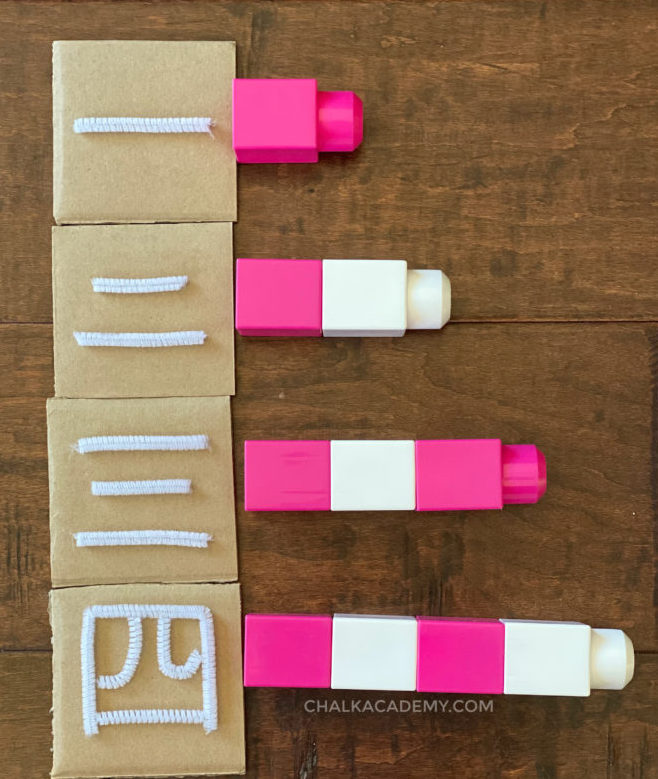
How to store the DIY tactile pipe cleaner numbers
For the numbers to be easily accessible and portable, we keep our numbers in small containers. I like to upcycle clean fruit containers from the grocery store.

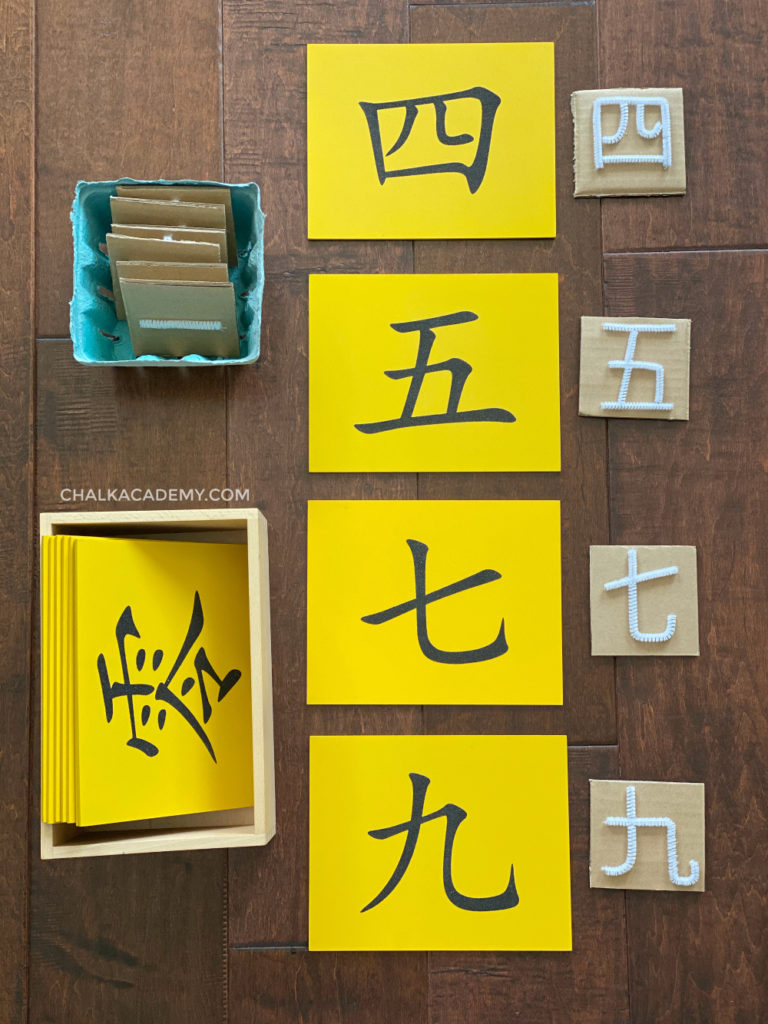
Which do you prefer – DIY pipe cleaner number or professional Montessori sandpaper boards?
I’m curious which material worked best for your family! Please share your experience in the comments below.
